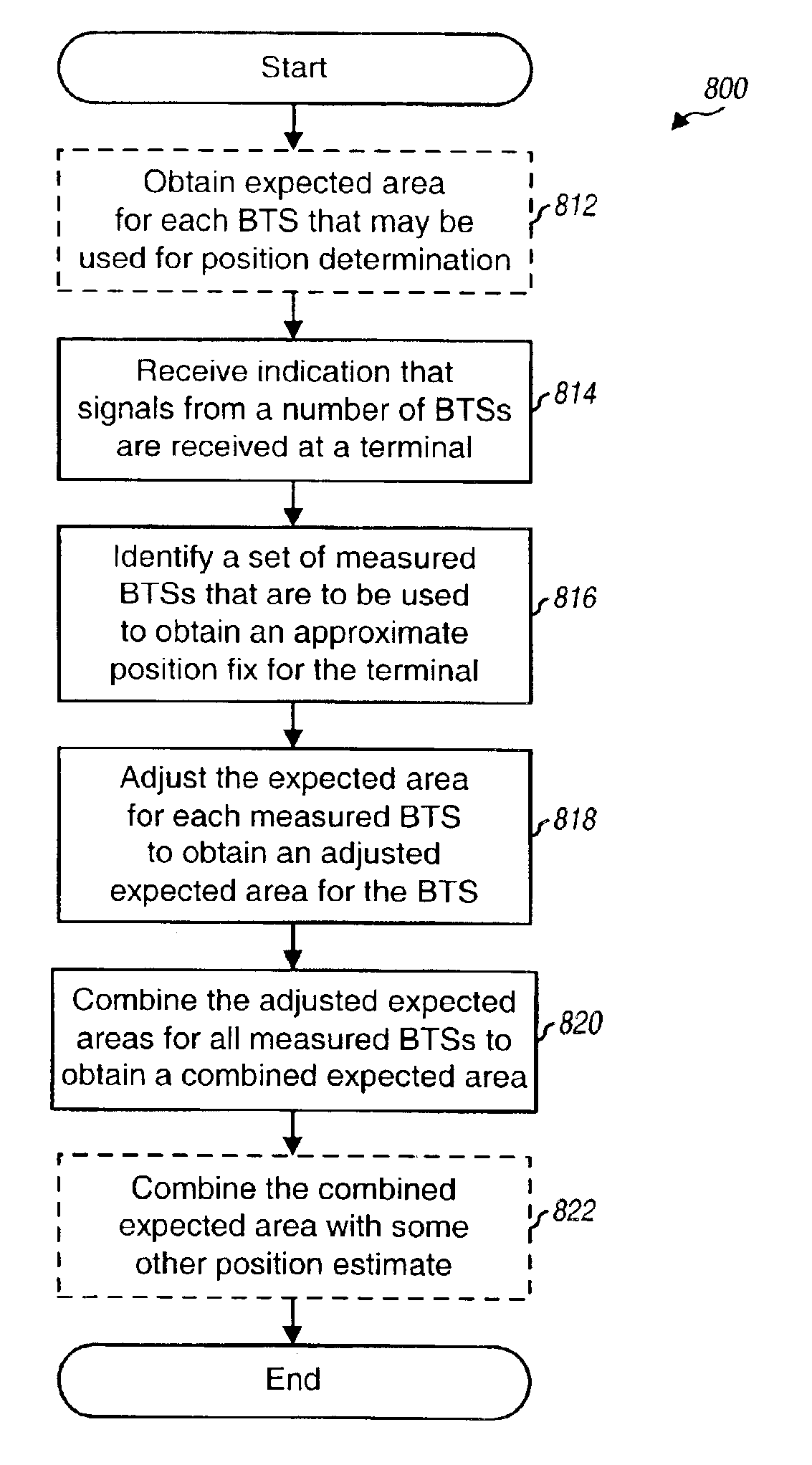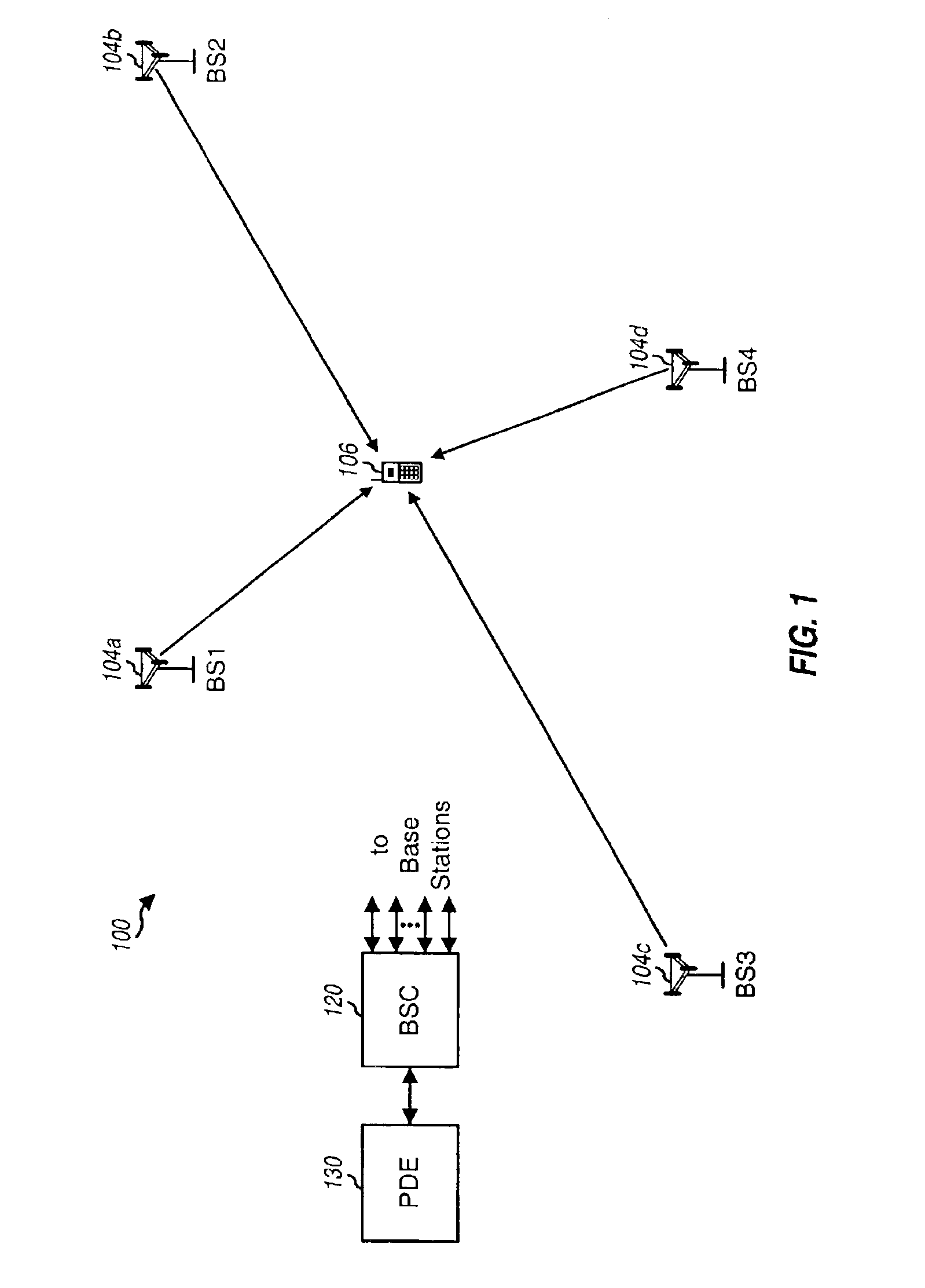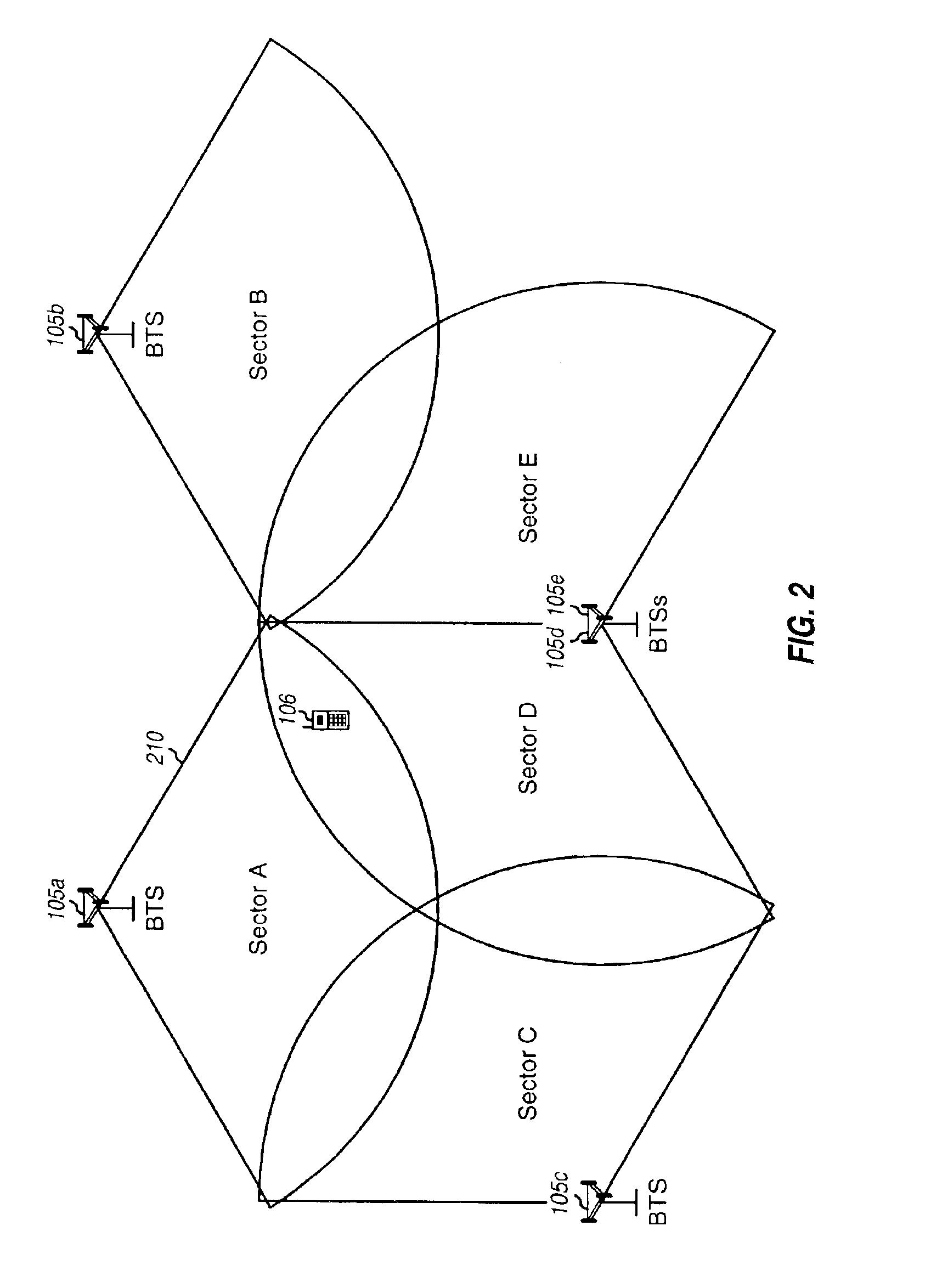Area based position determination for terminals in a wireless network
a wireless network and terminal technology, applied in direction finders, instruments, transmission monitoring, etc., can solve the problem that the position fix calculated using the position-domain technique is less accurate than the range-domain position fix, and achieve the effect of accurate estimation of the approximate position of the terminal
- Summary
- Abstract
- Description
- Claims
- Application Information
AI Technical Summary
Benefits of technology
Problems solved by technology
Method used
Image
Examples
Embodiment Construction
FIG. 1 is a diagram of a wireless communication network 100, which may be a code division multiple access (CDMA) network, a time division multiple access (TDMA) network, a frequency division multiple access (FDMA) network, or another type of wireless communication network. A CDMA network may be designed in accordance with one or more CDMA standard systems, such as an IS-95 system, a IS-2000 system, or a W-CDMA system. A TDMA network may be designed in accordance with one or more TDMA standard systems, such as a GSM system. The details of these standard systems are well known in the art.
Network 100 includes a number of base transceiver subsystems (BTSs) 104, with each BTS 104 serving a particular geographic area. Only four BTSs 104a through 104d are shown in FIG. 1 for simplicity. The coverage area of a BTS is often referred to as a “cell”. The coverage area is that area within which a terminal receives signals from the BTS 104. The size and shape of a cell is typically dependent on ...
PUM
 Login to View More
Login to View More Abstract
Description
Claims
Application Information
 Login to View More
Login to View More - R&D
- Intellectual Property
- Life Sciences
- Materials
- Tech Scout
- Unparalleled Data Quality
- Higher Quality Content
- 60% Fewer Hallucinations
Browse by: Latest US Patents, China's latest patents, Technical Efficacy Thesaurus, Application Domain, Technology Topic, Popular Technical Reports.
© 2025 PatSnap. All rights reserved.Legal|Privacy policy|Modern Slavery Act Transparency Statement|Sitemap|About US| Contact US: help@patsnap.com



